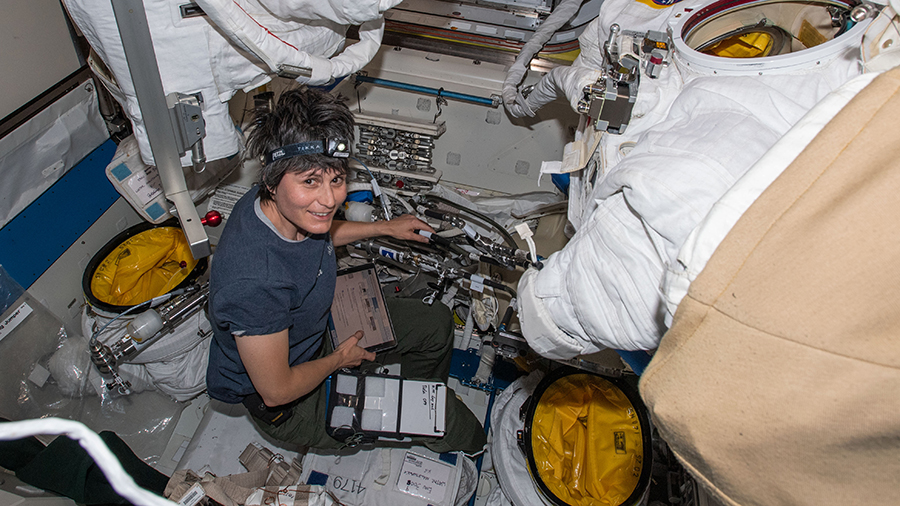Advanced Space Biology, Tech Research Inform Mission Success

The International Space Station hummed with research activity today as the Expedition 67 crew members continued exploring how microgravity affects the human body. The orbital residents also tested ways autonomous robots can assist astronauts and researched how fuel behaves in the weightless environment of space.
NASA Flight Engineer Bob Hines worked throughout Wednesday processing blood and urine samples collected from crew members and stowing them in a science freezer for later analysis. The astronaut also configured wrist-worn sleep monitoring devices, known as Actiwatches, that station residents wear periodically for research purposes. Data, including sleep-wake activity and light exposure, is downloaded to scientists on Earth to review how living in space affects an astronaut’s sleep cycle.
The Astrobee robotic free-flyers were activated today inside the Kibo laboratory module. NASA astronaut Jessica Watkins outfitted the toaster-sized robotic assistants with acoustic monitors and let them autonomously fly around Kibo for a technology demonstration. The experiment tests using listening techniques to monitor the health of spacecraft systems and detect potential issues.
NASA Flight Engineer Kjell Lindgren kicked off his day configuring video cables inside the Cell Biology Experiment Facility before photographing landmarks over Europe and Asia. Afterward, he partnered with Watkins after lunchtime for cargo operations inside the Cygnus space freighter. The private resupply ship from Northrop Grumman is due to complete its station mission at the end of June.
On Saturday, Cygnus is slated to complete its first reboost of the International Space Station. Cygnus’s gimbaled delta velocity engine will be used to adjust the space station’s orbit through a reboost of the altitude of the orbital outpost. The maneuver will last 10 minutes and 53 seconds and raise the station’s altitude by 0.7 miles. This Cygnus mission is the first to feature this enhanced capability as a standard service for NASA, following a test of the maneuver which was performed in 2018 during Cygnus’s ninth resupply mission.
ESA (European Space Agency) astronaut Samantha Cristoforetti studied fluid physics using distilled water and a specialized low-viscous liquid inside the Columbus laboratory module today. The Fluidics experiment explores ways to optimize fuel management in satellites and may even provide insights on the behavior of Earth’s ocean waves.
Commander Oleg Artemyev continued partnering today with Flight Engineer Sergey Korsakov to learn how to exercise more effectively in weightlessness. Artemyev also charged video camera and laptop computer batteries while Korsakov serviced Russian life support equipment. Flight Engineer Denis Matveev researched piloting and robotic techniques for future planetary missions then attached a sensor to himself to measure his cardiac activity for 24 hours.
from Space Station https://ift.tt/6VZgEiT
Comments
Post a Comment